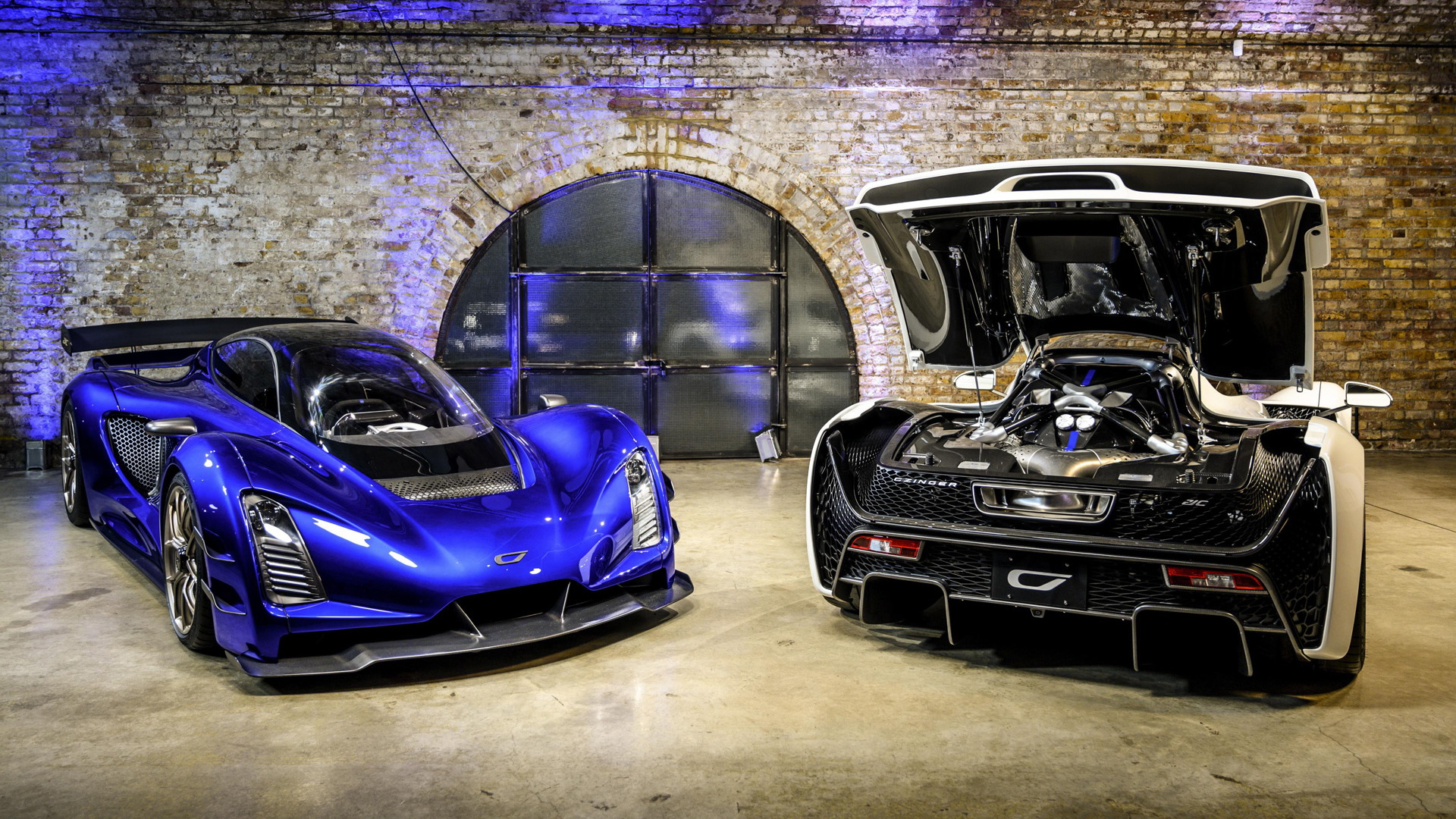The Czinger 21C boasts a custom-built, twin-turbo 2.88-liter V8 engine with an impressive redline of 11,000rpm and power output of 937bhp. Complementing this engine are two electric motors on the front axle that deliver a combined 296bhp, resulting in a total power output of 1233bhp along with all-wheel drive and torque vectoring capabilities. The 21C’s lightweight aluminum and carbon-fiber chassis, coupled with AI-designed and 3D-printed components, contribute to its power-to-weight ratio of 1:1 and a weight of only 1,250kg. This configuration enables the car to achieve incredible acceleration rates, with 0-62mph in 1.9 seconds and 0-186mph in 13.8 seconds, and a top speed of 205mph in the track-focused version. Furthermore, Czinger offers an option to increase the power output from both the V8 and electric motors, resulting in 1,333bhp and a further reduced 0-62mph time.

According to Czinger, the 21C hypercar’s regenerative braking and motor generator unit can recharge its 2.8kWh battery, allowing it to travel up to 12 miles solely on battery power. Additionally, the vehicle offers an environmentally friendly option for those who prefer bio-methanol fuel to power its V8 engine. The car’s design is also notable for its sleek and sophisticated appearance, with a focus on function rather than flashy aesthetics like some of its competitors. Despite being slightly wider than a Bugatti Chiron, the 21C’s curves and rounded edges give it a refined look.

The 21C car stands out in every aspect, including its unique seating arrangement. Unlike the traditional side-by-side seating in cars, the 21C has a 1+1 pillion layout – a departure from the McLaren Speedtail and Gordon Murray Automotive’s T.50, which offer space for three passengers. Lukas, the designer of 21C, explains that the layout was not selected just because it looks impressive but also for its functional benefits. The design helps to decrease the frontal surface area of the windscreen while utilizing more of the fender area for downforce. Additionally, the 1+1 seating arrangement allows for a passenger to accompany the driver, enhancing the emotional and shared driving experience. The rear seat is designed to be highly enjoyable and fosters an exceptional sense of connection between the driver and the passenger.

Although the current production car may look similar to the one introduced two years ago, the 21C has undergone significant changes since its debut. Within three months, it was widened and given brand-new front and rear frames, as well as a new suspension system. According to Lukas, the technology involved allowed for rapid changes and innovation. While a normal OEM might take seven to ten years to create a car like this, they were able to achieve it in a fraction of that time by iterating much more quickly. By using their ability to capture track data, simulate, and change the car, they were able to get fundamentally new parts onto the car very quickly. Their technology, called the Divergent Adaptive Production System (DAPS), combines AI-driven design software, 3D printing, and automated assembly into an end-to-end manufacturing solution that they created before entering the hypercar industry.

In essence, the process of creating components involves engineers and designers inputting essential requirements into a computer, which then designs parts that use minimal material. The final design is then sent to a laser metal 3D printer that can produce the parts quickly. Robotic arms in an automated assembly cell assemble individual pieces into larger structures, such as subframes. Kevin notes that these cells only take five minutes to assemble a 12-piece rear subframe, and one 22m x 22m assembly cell could produce up to 150,000 subframes annually. One advantage is that the cells can be reprogrammed quickly to produce another car if demand increases. The result is a stunning, skeletal component that looks biologic due to the maximally material and energy-efficient nature of the process, similar to how nature competes for efficiency.

Well-established brands are starting to realize the advantages of the new manufacturing system. Divergent, a company that creates 3D-printed aluminum parts for cars, will supply the Aston Martin DBR22 speedster with an already assembled aluminum rear subframe. The company plans to expand its printing and assembly centers worldwide, producing car parts for millions of cars, not just for expensive supercars. They envision their technology being utilized by start-ups, established brands, and potentially, companies outsourcing their entire body-in-white manufacturing to Divergent. If successful, this could revolutionize the way cars are built. However, in the meantime, the focus is on the 21C, and “quite a few” of the eighty models being produced have already been sold to handpicked buyers. According to Lukas, some of the buyers are prominent collectors in America and Europe who seek this car for its exceptional performance level. Others are new to the hypercar scene and are fascinated by the technology. They recognize that the 21C represents a turning point in automotive history where we move towards a new way of manufacturing, and the 21C captures that moment in time.

The experts are projecting that all units of the 21C will be sold by the end of the year, and shipping is expected to start in late 2023. As of June 2022, orders were equally divided between the high-downforce configuration and the low-drag version, which was unveiled during the Monterey Car Week in California. The two models differ in various aspects, with the 21C V Max eliminating the large rear wing and front dive planes to increase speed and achieve a top speed of 253mph, surpassing the McLaren Speedtail by 3mph.
Despite its success, the Czinger team announced that production of the 21C will stop after the 80-unit run, and the company is already developing new models. The four-seater Hyper GT is the next in line, with a prototype showcased alongside the 21C V Max in August. The car features a twin-turbo, flat-plane crank V8 from the 21C and two electric motors, but details on its exact performance are yet to be released.

Lukas has hinted that there will be a Czinger electric vehicle in the future, but has not given any specific details or timeline for its release. The father and son team have also revealed that they are collaborating with mainstream car brands to utilize their innovative manufacturing system, but declined to disclose which ones. However, they have confirmed that they are working with UK brands and planning for a factory in Britain. While this kind of ambition might normally be met with skepticism, the impressive capabilities of the Czingers’ technology showcased in the 21C and the budding success of their brand has left us eager to see what the future holds.




